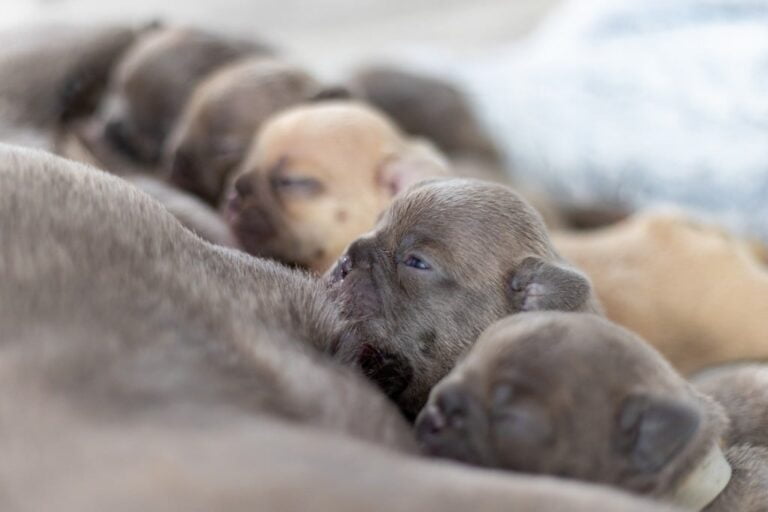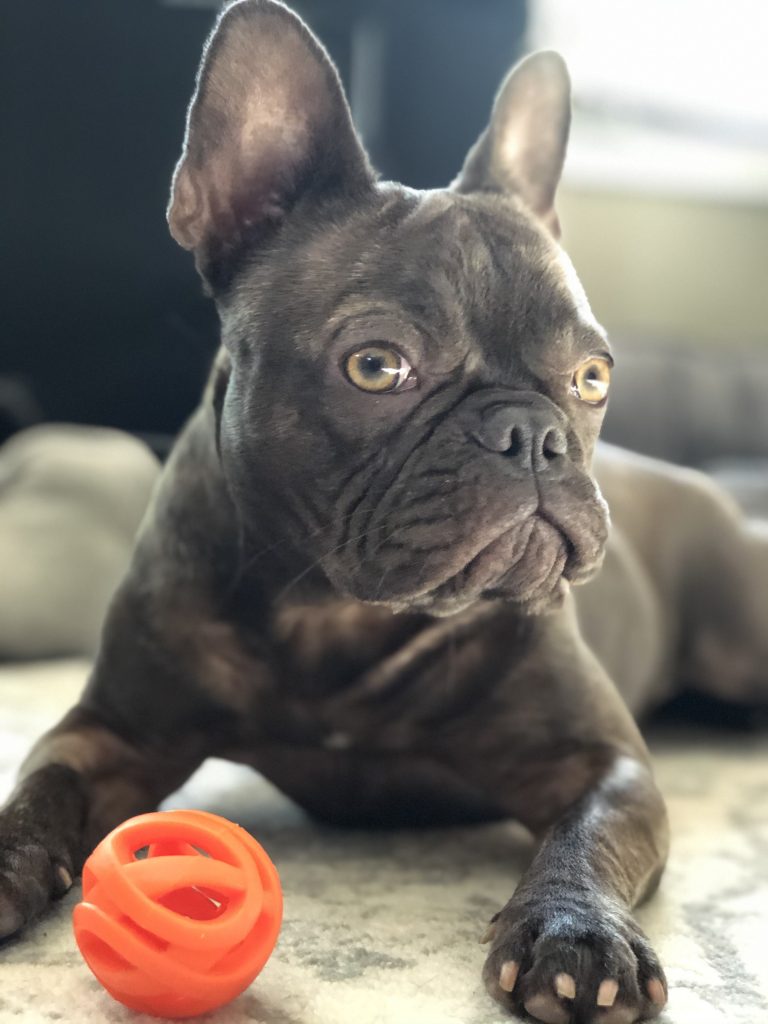With advancements in DNA testing technology, breeders can better predict the color, health, and other traits in future or potential litters.
The most commonly used companies for genetic testing on French Bulldogs include Animal Genetics, UC Davis, and Vetgen, with Animal Genetics being our preferred choice. Other options exist, but not all provide the variety of tests you might be interested in. While health testing is paramount, this article primarily focuses on color and appearance.

Understanding Genetic Combinations
Every potential puppy is a half-and-half mix of our sire and dam. They each contribute one chromosome that forms the puppy’s complete DNA structure.
These chromosomes contain sequences known as genes, which determine all genetic traits. Each gene contains instructions for the body to make proteins, defining whether the puppy develops traits like blue eyes, long hair, or a specific color.
The Role of Genes in Determining Color
When it comes to color, the puppy requires two copies of any color gene to manifest that color. A single copy isn’t enough for the puppy to develop the corresponding pigment.
However, this isn’t consistent for all traits. For example, if a puppy carries just one copy of the brindle gene, it will still develop a brindle color. When a puppy carries several pairs of color genes, one color may dominate, or they might result in a completely different color, depending on the precise gene pairing.

Gene Pair Representation
Colors are often represented by letter pairs such as “e/E, e/e, or EE” (E-Locus Gene or Cream). These pairs depict a specific gene pairing in a puppy, where a lowercase letter indicates a positive test, and an uppercase letter indicates a negative one.
Important note – The letter “N” or “n” might replace the uppercase letter to signify a negative result.
For example:
- e/e – The puppy will display a cream color.
- e/E or E/e – The puppy carries the cream gene, but won’t display it (also written as e/n).
- E/E – The puppy won’t display or reproduce the cream color (also written as N/N or n/n).

Common Color Traits for Testing
You can test for the following common color traits:
- Cream: E Locus (e/e)
- Brown: B Locus (b/b)
- Chocolate: Cocoa (co/co)
- Dilute (Blue): D Locus (d/d)
The dilute gene or D Locus leads to a less intense color when both pairs are present. Paired with other colors, it can result in the following:
- Lilac: d/d + co/co
- Isabella: d/d + b/b
- Platinum: d/d + co/co + e/e
It’s important to note that all these combinations require lowercase letters. If any of these are in uppercase, they won’t produce the corresponding color.
Color | Gene / Alias | Letter Pair |
Cream | E Locus | e/e |
Brown | B Locus | b/b |
Chocolate | Cocoa | co/co |
Dilute (Blue) | D Locus | d/d |
Multiple Pairs Create More Unique Colors:
Color | Letter Pair |
Lilac | d/d + co/co |
Isabella | d/d + b/b |
Platinum | d/d + co/co + e/e |
Practical Example of Gene Pairing
Let’s look at a real-world example. Suppose we plan to breed a male stud which is a visible cream dog with a genetic pairing of e/e + D/D, and a female cream carrier (not visibly cream) carrying one copy, expressed as E/e, and one copy of dilute, expressed as d/D. In this situation, we anticipate producing 50% visibly cream puppies and 50% cream carriers. The dilute gene from the female is expected to create carriers half of the time, while the rest of the time, the gene will be absent.
The gene combinations can be visually represented using a Punnett square, which aids in predicting pairings:
E | e | D | D | ← Male E/e + D/D | |
e | e/E (carrier) | e/e (visible) | |||
e | e/E (carrier) | e/e (visible) | |||
d | d/D (carrier) | d/D (carrier) | |||
D | D/D (absent) | D/D (absent) | |||
Female e/e + d/D |
Watch:







